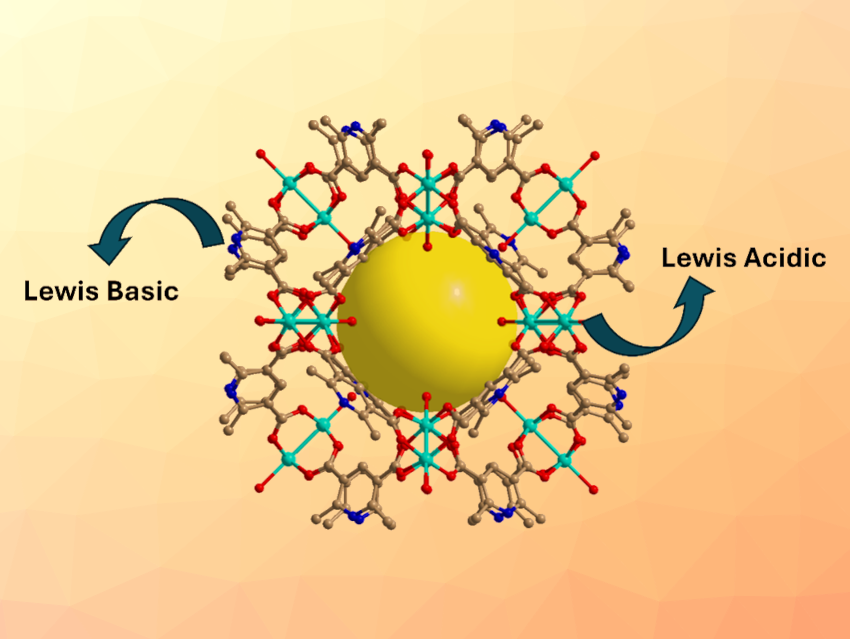In sustainable chemistry, multicomponent reactions are favored for their efficiency, minimized environmental impact, and high atom economy. Multifunctional catalysts, which incorporate different catalytic sites, e.g., both acidic and basic sites, are interesting in this context due to their synergistic effects.
Shengqian Ma, Gaurav Verma, and colleagues at the University of North Texas in Denton, Texas, USA have synthesized metal-organic cuboctahedra (“nanoballs”) that can be used as catalysts for one-pot tandem reactions. These discrete structures were readily obtained from copper(II) acetate and 2,6-dimethylpyridine-3,5-dicarboxylate at room temperature. The team dissolved roughly equal amounts of the two components in dimethylformamide (DMF) and then layered methanol over the DMF phase, obtaining the desired product as rod-shaped blue crystals. The resulting nanoballs feature Lewis-acidic Cu(II) sites and Lewis-basic pyridine sites.
The team observed that the system is an efficient catalyst for a one-pot deacetalization-Knoevenagel condensation reaction between benzaldehyde dimethylacetal and malononitrile, with dimethyl sulfoxide (DMSO) as the optimal solvent. The catalyst can be recycled, and its versatility was demonstrated by using it to promote other transformations, such as a deacetalization-Henry reaction between benzaldehyde dimethylacetal and nitromethane.
- Bifunctional Metal‐Organic Nanoballs Featuring Lewis Acidic and Basic Sites as a New Platform for One‐Pot Tandem Catalysis,
Gaurav Verma, Sanjay Kumar, Elliott R. Slaughter, Harsh Vardhan, Thamraa Moh. Alshahrani, Zheng Niu, Wen-Yang Gao, Lukasz Wojtas, Yu-Sheng Chen, Shengqian Ma,
ChemPlusChem 2024.
https://doi.org/10.1002/cplu.202400169




